Image-Guided Breast Biopsy
When it is not possible to tell from imaging whether a growth is benign or malignant, a biopsy is a highly accurate way to evaluate suspicious masses. Needles are inserted into the abnormal tissue to extract a sample for testing. Radiologists use many types of imaging to guide biopsies and get the most accurate samples.
Needle Core Breast Biopsies at LMI include:
Stereotactic-Guided Breast Biopsy
The stereotactic table is specially designed for this procedure. Two digital x-ray images are taken from different angles, allowing the radiologist to precisely localize the area to be biopsied. Once the area is located, the radiologist numbs the area with a local anesthetic, then uses computer guidance for precise needle placement and the collection of small tissue samples.
Planning for your procedure
You must not take aspirin, aspirin-containing products or blood thinners for seven days prior to a needle biopsy. A comfortable two-piece garment should be worn as well as your bra. You should avoid using powder, perfume or deodorant on the day of your biopsy.
For your breast biopsy appointment plan to be in the center for a couple of hours. Your appointment includes all pre- and post-procedure care. The procedure itself takes about 15 to 20 minutes. The breast to be biopsied is compressed (like a mammogram), while x-ray imaging is used to help locate the abnormality. Once the abnormality is located, the area is sanitized. A radiologist injects a local anesthetic into your skin and deeper tissues to numb the area. A tiny skin incision—approximately 1/4 inch— is made. Most patients experience some minor discomfort during this process.
The radiologist then locates the abnormality and extracts several tissue samples to be sent to your referring provider’s hospital laboratory and interpreted by a pathologist. After the tissue is removed, a small metallic marker is placed in your breast. This marker is a reference point for future imaging and confirms that the area of concern has been biopsied. The tissue samples are sent to the pathology lab for analysis.
Following your procedure, a mammogram is performed to document the position of the marker. You will receive instructions on permissible activities after the procedure is done.
Ultrasound-Guided Breast Biopsy
The radiologist uses ultrasound to locate the area for biopsy and to direct the needle used in collecting breast tissue samples.
Planning for your procedure
You must not take aspirin, aspirin-containing products or blood thinners for seven days prior to a needle biopsy. A comfortable two-piece garment should be worn as well as your bra. You should avoid using powder, perfume or deodorant on the day of your biopsy.
For your ultrasound-guided breast biopsy appointment plan to be in the center for a couple of hours. Your appointment includes all pre- and post-procedure care. The procedure itself takes about 15 minutes. During this time, you are lying still on your back. A female ultrasound technologist will ensure that you are comfortable and then apply a gel that is used to help improve the contact between the hand-held transducer and the skin. The technologist will obtain images by gently pressing and rolling the transducer over areas of the breast or underarms. Once the abnormality is located, a radiologist sanitizes the area and injects a local anesthetic into the skin and deeper tissues to numb the area. A tiny skin incision – approximately 1/4 inch – is made. The radiologist then uses imaging techniques to locate the exact location of the abnormality and extracts several tissue samples to be sent to and interpreted by a pathologist. After the tissue is removed, a small metallic marker is placed in your breast. This marker is a reference point for future workups if needed and confirms that the area of concern has been biopsied. The tissue samples are sent to the pathology lab for analysis.
Following your procedure, a mammogram is performed to document the position of the marker. You can resume normal, non-strenuous activities immediately after the procedure is done.
MRI-Guided Breast Biopsy
An MRI-guided breast biopsy is a non-radiation, minimally invasive technique used to gather tissue samples from a breast abnormality. Sometimes these abnormalities turn out to be benign. If there is a potential problem, early detection is essential and increases treatment options and the likelihood of successful recovery.
For your MRI-guided breast biopsy appointment plan to be in the center for a couple of hours. Your appointment includes all pre- and post-procedure care. The procedure itself can take up to an hour. During this time, you are lying still on your stomach on a scanning table. As with a breast MRI, radio frequencies and a strong magnet are used in conjunction with contrast material to create highly detailed pictures of the breasts. As the procedure begins, you will hear a variety of muffled thumping and beeping sounds that last for several minutes.
For more information on this topic, please visit radiologyinfo.org Magnetic Resonance (MRI)-Guided Breast Biopsy
Planning for your procedure
You must not take aspirin, aspirin-containing products or blood thinners for seven days prior to a needle biopsy. A comfortable two-piece garment should be worn as well as your bra. You should avoid using powder, perfume or deodorant on the day of your biopsy.
After the initial series of images are captured, you will be given a contrast fluid intravenously through a small IV catheter. Additional images are then taken. Once the abnormality is located, a radiologist sanitizes the area and injects a local anesthetic into the skin and deeper tissues to numb the area. A tiny skin incision – approximately 1/4 inch – is made. The radiologist then locates the abnormality and extracts several tissue samples to be sent to and interpreted by a pathologist. After the tissue is removed, a small metallic marker is placed in your breast. This marker is a reference point for future workups if needed and confirms that the area of concern has been biopsied. The tissue samples are sent to the lab for analysis.
Following your procedure, a mammogram is performed to document the position of the marker. You will receive instructions on permissible activities after the procedure is done.




